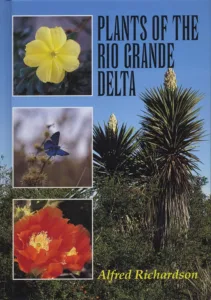This book provides an accessible and reliable identification guide to all of the plants, excluding grasses, of the region—some 823 species. In clear, nontechnical language, Alfred Richardson gives a brief description of each species, along with its range, habitat, and general blooming time. Over two hundred superb color photographs offer quick and easy field identification, while line drawings illustrate notable characteristics of the plants.
This volume expands and updates Alfred Richardson’s previous book, Plants of Southernmost Texas, published in 1990 by the Gorgas Science Foundation. It will be an essential field guide for everyone interested in South Texas flora, from winter visitors and Valley residents to professional botanists.



